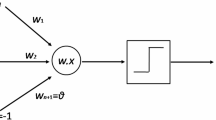Abstract
This work investigates the impact of the neural networks architecture when performing fingerprint recognition. Three networks are studied; a Triplet network and two Siamese networks. They are evaluated on datasets with specified amounts of relative translation between fingerprints. The results show that the Siamese model based on contrastive loss performed best in all evaluated metrics. Moreover, the results indicate that the network with a categorical scheme performed inferior to the other models, especially in recognizing images with high confidence. The Equal Error Rate (EER) of the best model ranged between \(4\% - 11 \%\) which was on average 6.5 percentage points lower than the categorical schemed model. When increasing the translation between images, the networks were predominantly affected once the translation reached a fourth of the image. Our work concludes that architectures designed to cluster data have an advantage when designing an authentication system based on neural networks.
Access this chapter
Tax calculation will be finalised at checkout
Purchases are for personal use only
Similar content being viewed by others
References
Alrashidi, A., Alotaibi, A., Hussain, M., AlShehri, H., AboAlSamh, H.A., Bebis, G.: Cross-sensor fingerprint matching using siamese network and adversarial learning. Sensors 21(11) (2021). https://doi.org/10.3390/s21113657
Anand, V., Kanhangad, V.: PoreNet: CNN-based pore descriptor for high-resolution fingerprint recognition. IEEE Sens. J. 20(16), 9305–9313 (2020). https://doi.org/10.1109/JSEN.2020.2987287
Cappelli, R., Ferrara, M., Maltoni, D., Turroni, F.: Fingerprint verification competition at ijcb2011. In: 2011 International Joint Conference on Biometrics (IJCB), pp. 1–6 (2011). https://doi.org/10.1109/IJCB.2011.6117488
Chowdhury, A., Kirchgasser, S., Uhl, A., Ross, A.: Can a CNN automatically learn the significance of minutiae points for fingerprint matching? In: 2020 IEEE Winter Conference on Applications of Computer Vision (WACV), pp. 340–348 (2020). https://doi.org/10.1109/WACV45572.2020.9093301
Hadsell, R., Chopra, S., LeCun, Y.: Dimensionality reduction by learning an invariant mapping. In: 2006 IEEE Computer Society Conference on Computer Vision and Pattern Recognition (CVPR’06), vol. 2, pp. 1735–1742 (2006). https://doi.org/10.1109/CVPR.2006.100
Lee, H.C., Gaensslen, R.E.: Advances in Fingerprint Technology, 2nd edn. CRC Press Inc (2001)
He, K., Zhang, X., Ren, S., Sun, J.: Deep residual learning for image recognition. In: 2016 IEEE Conference on Computer Vision and Pattern Recognition (CVPR), pp. 770–778 (2016). https://doi.org/10.1109/CVPR.2016.90
Lam, T., Nilsson, S.: Application of convolutional neural networks for fingerprint recognition (2018), student Paper
Luo, W., Li, Y., Urtasun, R., Zemel, R.: Understanding the effective receptive field in deep convolutional neural networks. In: Proceedings of the 30th International Conference on Neural Information Processing Systems, pp. 4905–4913. NIPS’16, Curran Associates Inc., Red Hook, NY, USA (2016). https://doi.org/10.5555/3157382.3157645
Salomon, G., Britto, A., Vareto, R.H., Schwartz, W.R., Menotti, D.: Open-set face recognition for small galleries using siamese networks. In: 2020 International Conference on Systems, Signals and Image Processing (IWSSIP), pp. 161–166 (2020). https://doi.org/10.1109/IWSSIP48289.2020.9145245
Schroff, F., Kalenichenko, D., Philbin, J.: FaceNet: a unified embedding for face recognition and clustering. In: 2015 IEEE Conference on Computer Vision and Pattern Recognition (CVPR) (2015). https://doi.org/10.1109/cvpr.2015.7298682
Snoek, J., Larochelle, H., Adams, R.P.: Practical Bayesian optimization of machine learning algorithms. In: Proceedings of the 25th International Conference on Neural Information Processing Systems - Volume 2, pp. 2951–2959. NIPS’12, Curran Associates Inc., Red Hook, NY, USA (2012). https://doi.org/10.5555/2999325.2999464
Tan, M., Le, Q.V.: EfficientNet: rethinking model scaling for convolutional neural networks. CoRR abs/1905.11946 (2019). https://arxiv.org/abs/1905.11946
Zhang, D., Liu, F., Zhao, Q., Lu, G., Luo, N.: Selecting a reference high resolution for fingerprint recognition using minutiae and pores. IEEE Trans. Instrum. Meas. 60(3), 863–871 (2011). https://doi.org/10.1109/TIM.2010.2062610
Zhang, F., Feng, J.: High-resolution mobile fingerprint matching via deep joint KNN-triplet embedding. In: Proceedings of the AAAI Conference on Artificial Intelligence, vol. 31, issue 1 (2017). https://doi.org/10.1609/aaai.v31i1.11088
Zhang, F., Xin, S., Feng, J.: Deep dense multi-level feature for partial high-resolution fingerprint matching. In: 2017 IEEE International Joint Conference on Biometrics (IJCB), pp. 397–405 (2017). https://doi.org/10.1109/BTAS.2017.8272723
Zhang, F., Xin, S., Feng, J.: Combining global and minutia deep features for partial high-resolution fingerprint matching. Pattern Recogn. Lett. 119, 139–147 (2019). https://doi.org/10.1016/j.patrec.2017.09.014
Zhu, L., Xu, P., Zhong, C.: Siamese network based on CNN for fingerprint recognition. In: 2021 IEEE International Conference on Computer Science, Electronic Information Engineering and Intelligent Control Technology (CEI), pp. 303–306 (2021). https://doi.org/10.1109/CEI52496.2021.9574487
Author information
Authors and Affiliations
Corresponding author
Editor information
Editors and Affiliations
Rights and permissions
Copyright information
© 2024 The Author(s), under exclusive license to Springer Nature Switzerland AG
About this paper
Cite this paper
Hallösta, S., Pettersson, M.I., Dahl, M. (2024). Impact of Neural Network Architecture for Fingerprint Recognition. In: Bennour, A., Bouridane, A., Chaari, L. (eds) Intelligent Systems and Pattern Recognition. ISPR 2023. Communications in Computer and Information Science, vol 1940. Springer, Cham. https://doi.org/10.1007/978-3-031-46335-8_1
Download citation
DOI: https://doi.org/10.1007/978-3-031-46335-8_1
Published:
Publisher Name: Springer, Cham
Print ISBN: 978-3-031-46334-1
Online ISBN: 978-3-031-46335-8
eBook Packages: Computer ScienceComputer Science (R0)




